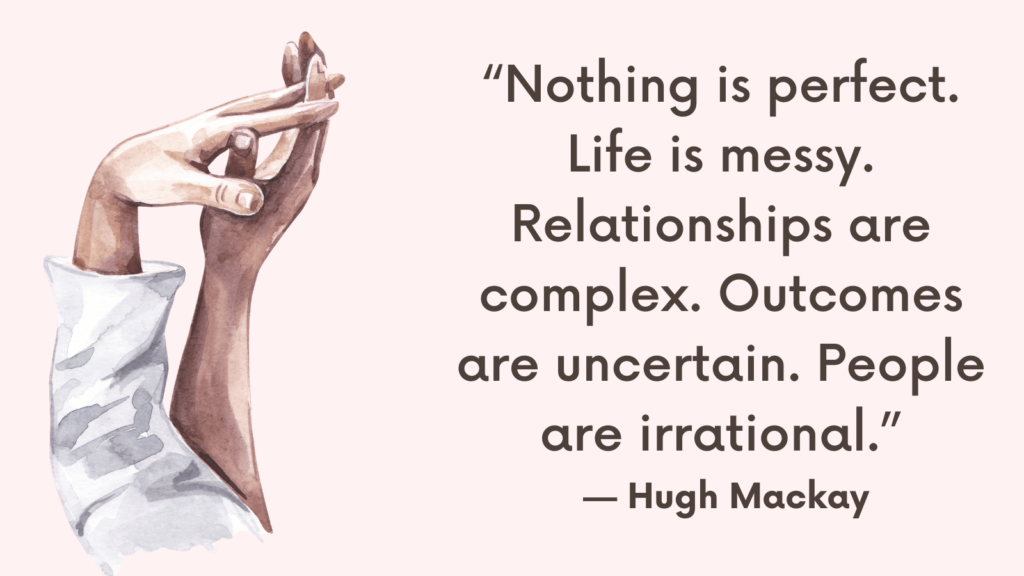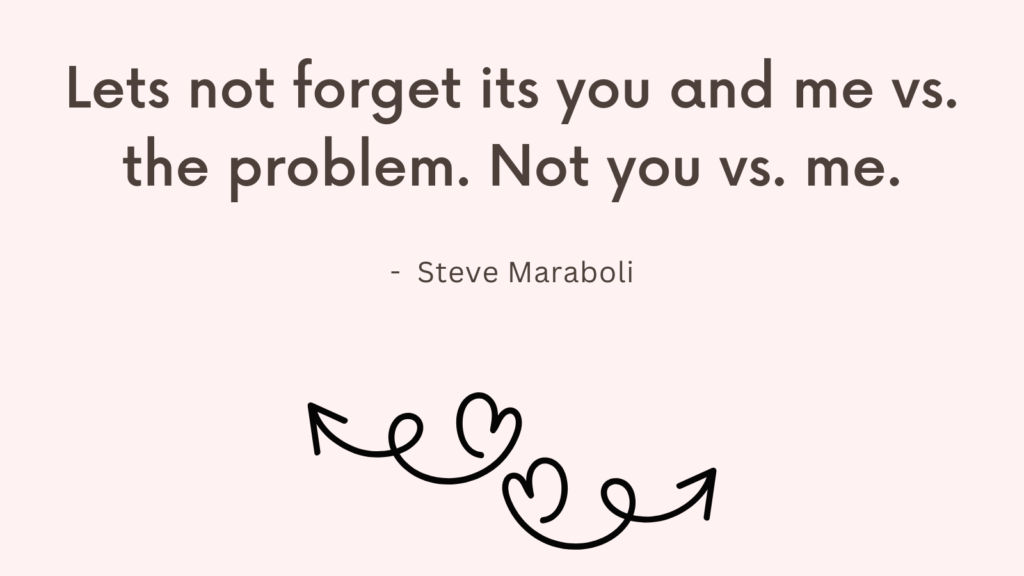In this post, you’re going to find out what happens when you stop chasing an avoidant.
Who Is The Avoidant?
The term “avoidant” typically refers to individuals who exhibit characteristics of avoidant attachment in their interpersonal relationships.
Avoidant individuals often display a reluctance to engage in emotional intimacy, a tendency to maintain emotional distance, and an inclination to prioritize independence and self-sufficiency in their interactions with others.
This attachment style is commonly recognized in the context of attachment theory, which elucidates how early experiences with caregivers can shape an individual’s approach to close relationships throughout their lifespan.
Avoidant individuals may have developed this attachment style as a result of inconsistent or emotionally unavailable caregiving during their formative years, leading them to internalize a belief that relying on others for emotional support may not meet their needs or could lead to emotional pain.
Consequently, they may have learned to downplay the significance of emotional closeness and to prioritize self-reliance as a means of protecting themselves from potential hurt or disappointment.
In adult romantic relationships, avoidant individuals may struggle to fully engage in closeness and intimacy, often preferring to maintain a degree of emotional distance or independence.
They may find it challenging to express vulnerable emotions, tend to be uncomfortable with excessive displays of affection, and may prioritize personal space and autonomy.
While they may desire connection, their fear of being engulfed by intimacy or losing their sense of independence can lead them to create emotional barriers or keep an emotional “safe distance” from their partners.
It’s crucial to understand that an avoidant attachment style is not a definitive label but rather a pattern of relating that can be influenced by various factors, including past experiences, individual personality traits, and situational contexts.
Related: Top 9 Avoidant Attachment Triggers (+7 Tips On Overcoming Avoidant Attachment Style)
What Happens When You Stop Chasing An Avoidant?
When you stop chasing an avoidant individual, several psychological and interpersonal dynamics come into play, which can have significant effects on both parties involved. Here’s an in-depth exploration of what may happen when you stop pursuing an avoidant individual:
1. Relief from Emotional Exhaustion:
When you cease chasing an avoidant individual, you may experience a sense of relief from the emotional exhaustion that often accompanies pursuing someone who is emotionally distant or hesitant to engage in close relationships.
Constantly seeking validation, attention, or intimacy from an avoidant person can take a toll on your emotional well-being, leading to feelings of frustration, rejection, and inadequacy.
2. Shift in Power Dynamics:
Stopping the pursuit can lead to a shift in power dynamics within the relationship.
Previously, the avoidant individual might have held more control over the level of closeness and emotional engagement.
By withdrawing your pursuit, you reclaim a sense of agency and autonomy, which can influence how the avoidant individual perceives and responds to you.
3. Potential Awakening of Anxious-Avoidant Dynamics:
In some cases, an anxious-avoidant attachment dynamic may be at play between you and the avoidant individual.
The anxious individual typically seeks closeness and reassurance, while the avoidant individual tends to resist intimacy and emotional closeness.
When the pursuit stops, the avoidant individual may initially experience a sense of relief from pressure but could also feel a subtle discomfort arising from the disruption of their established dynamics.
Related: Dismissive Avoidant vs. Fearful Avoidant
4. Heightened Ambivalence in the Avoidant Individual:
Ceasing your pursuit can bring forth a heightened sense of ambivalence in the avoidant individual.
On one hand, they may experience a newfound sense of freedom and independence.
On the other hand, the absence of pursuit may trigger underlying fears of vulnerability, leading to feelings of loneliness or abandonment that are characteristic of avoidant attachment patterns.
5. Potential for Re-Evaluation:
The act of stepping back from the pursuit can create an opportunity for both you and the avoidant individual to re-evaluate the dynamics of your relationship.
By creating space, you allow for introspection and potential shifts in perspective.
The avoidant individual may begin to consider the impact of their distancing behaviors, while you may gain clarity regarding your own needs and boundaries.
6. Emotional Impact on the Pursuer:
As the pursuer, you may undergo a process of self-reflection and emotional recalibration when you stop chasing the avoidant individual.
This may involve recognizing and addressing any underlying anxieties or insecurities that contributed to the pursuit.
Embracing self-care, self-compassion, and exploring your own attachment style can be pivotal in this phase.
Related: 10 Steps To End Fearful Avoidant Chase
7. Potential for Reconnection or Further Distance:
The cessation of pursuit can lead to divergent outcomes.
It may pave the way for the potential reconnection and renegotiation of the relationship dynamics based on newfound insights.
Alternatively, it could solidify the existing distance, leading to a gradual fading of the connection as both parties pursue separate paths.
8. Emotional Processing and Healing:
For the pursuer, stopping the chase offers an opportunity for emotional processing and healing.
It allows you to redirect your focus towards self-growth, personal fulfillment, and nurturing other meaningful connections in your life.
Engaging in activities that promote self-discovery and emotional resilience can aid in this healing process.
Related: Top 10 Tips for Healing Fearful Avoidant Attachment

Secure Relationship Green Flags
A healthy, secure relationship doesn’t leave you guessing, doubting, or second-guessing your worth. It feels steady, respectful, and safe—even when life gets messy. Here are the green flags to look for when you’re building or choosing secure love.
1. You Feel Safe Expressing Your Needs Without Fear
You don’t have to hide, shrink, or second-guess asking for support, reassurance, or space.
2. Conflict Is Handled With Respect, Not Punishment
Arguments don’t spiral into threats, stonewalling, or insults. Even disagreements feel like a problem you’re solving together.
3. They Show Consistent Effort Over Time
Love isn’t just grand gestures—it’s showing up, following through, and caring in the small, daily moments.
4. Emotional Intimacy Builds Gradually and Naturally
You feel layers of trust deepening over time instead of being love-bombed or rushed into emotional overdrive.
5. Boundaries Are Respected, Not Resented
When you say “no” or set a limit, it’s met with understanding, not guilt trips, anger, or withdrawal.
6. Vulnerability Is Met With Care, Not Criticism
When you share your fears, dreams, or past hurts, they respond with empathy—not judgment, mockery, or dismissal.
7. You Maintain Your Individual Identity Within the Relationship
You can pursue your hobbies, friendships, and personal goals without feeling like you’re abandoning the relationship.
8. Trust Is Built Through Actions, Not Just Words
They show you through consistent behavior that they are reliable, honest, and emotionally available.
9. Difficult Conversations Are Approached With Curiosity, Not Defensiveness
You’re able to talk through uncomfortable topics without either of you shutting down or blowing up.
10. You Feel Good About Yourself in Their Presence
A secure relationship lifts your self-esteem instead of making you feel small, confused, or inadequate.
11. You’re Not Afraid to Be Quiet Together
You don’t feel pressure to constantly entertain, impress, or prove your worth—being together is enough.
12. Future Plans Are Made With You, Not Around You
You’re included in their vision for the future in practical, consistent ways—not just vague promises.
13. Mistakes Are Admitted and Apologies Are Genuine
Both of you can say “I was wrong” without blame, shame, or defensiveness blocking growth.
14. You Feel Free to Say “I’m Not Okay” Without Fear of Rejection
Struggles and hard days are met with support, not distance or dismissal.
15. You Move Through Hard Things Together Without Threats of Leaving
Commitment isn’t weaponized. Challenges aren’t framed as reasons to run—they’re faced as a team.
Conclusion
Disengaging from pursuing an avoidant individual can initiate a complex interplay of emotional, relational, and psychological processes.
It presents opportunities for both parties to explore their individual needs, reassess relationship dynamics, and embark on paths of personal growth and self-discovery.



